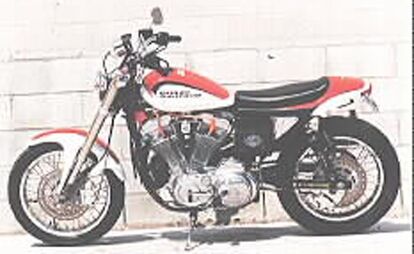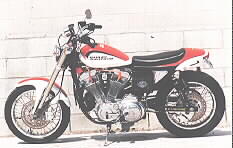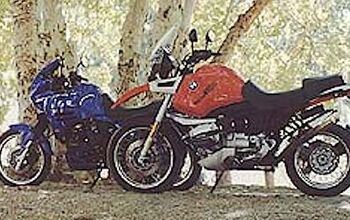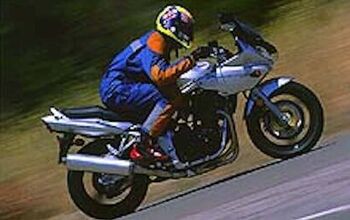Church Of MO – Bartels' XLR 1200

By the time you read this, the 2014 Summer X-Games will have been well underway. The Olympics of extreme sports, the X-Games is where you go to see what the young crowd is paying attention to. It’s fitting, then, that Harley-Davidson held its press introduction of the new Street 750 platform in conjunction with the X-Games, as the first all-new platform for The Motor Company in 13 years is aimed directly at the youngsters who might be interested in trading their skateboards for a motorcycle. This is relevant because Harley has initiated a movement to gauge whether there is interest in making flat track racing the next X-Games sport. If so, the Street 750 could be the bike of choice.
Of course, you can’t talk about flat track racing without mentioning the H-D XR750, the Godfather of the class. In this week’s Church of MO feature, we go back to 1996 and a bit of foreshadowing. Here, we ride a custom Bartels’ XLR 1200 inspired by XR750 flat trackers and built by Bartels’ — a hugely successful Harley dealer in Southern California. History shows us that an iteration of this bike would become a pre-cursor to the XR1200 H-D would eventually produce from 2008-2013. So how’s the bike? Let Andy Saunders tell you.
Bartels’ XLR 1200
Mile racer for the street
By Andy Saunders Mar. 19, 1996
Not many things have stayed the course of American racing for twenty five years – but one of the most successful will soon rack up a quarter century of race wins. That most traditional, most successful racer is the alloy-engined Harley-Davidson XR 750.
After all those years, and as makers of the winningest motorcycle around, you’d think Harley would market a replica model. Well, you’d think that. They even tried, back in the early eighties, with the XR 1000, a Sportster-based street bike with twin Dellorto carburetors and reversed, reworked rear cylinder head.
And in fact, hundreds remained in the warehouse for months, until word started going around about how well they responded to just a little bit of tuning. With a lot of extra work, they turned into 90 hp monster bikes. Suddenly, they were gone from the showrooms: but then they were gone from the catalog too, and Harley-Davidson has never again sold an XR lookalike. More’s the pity, according to many enthusiasts.
Still want to build your own XR? Well, just in case you changed your mind, the XLR 1200, built by Bartels’, combines the looks and lightness of the race bike with the practicality and ease of service of the stock Sportster power plant.
The combination of aftermarket cams, carburetor and tuned exhaust give this XL the kind of pulling power you’d expect from 1200cc. Down low in the rev range, there’s enough torque to overcome the fairly high first gear. As you twist the throttle grip further, the power keeps building to the rpm peak (87 hp at 6200 rpm). Without looking at the rev counter (actually, there isn’t one) the gear shifting point is easily found: it’s time to shift when your feet vibrate themselves off the pegs…
Another characteristic shared with the XR 750 is the vibration level. Yes, like any rigid mounted Sportster, this engine shakes. But there’s no means of damping this particular kind of vibration before it hits the rider: it’s the price of a race-replica machine (actually, the price is in the region of $18,000, but you know what we mean).

Troy's been riding motorcycles and writing about them since 2006, getting his start at Rider Magazine. From there, he moved to Sport Rider Magazine before finally landing at Motorcycle.com in 2011. A lifelong gearhead who didn't fully immerse himself in motorcycles until his teenage years, Troy's interests have always been in technology, performance, and going fast. Naturally, racing was the perfect avenue to combine all three. Troy has been racing nearly as long as he's been riding and has competed at the AMA national level. He's also won multiple club races throughout the country, culminating in a Utah Sport Bike Association championship in 2011. He has been invited as a guest instructor for the Yamaha Champions Riding School, and when he's not out riding, he's either wrenching on bikes or watching MotoGP.
More by Troy Siahaan









































Comments
Join the conversation